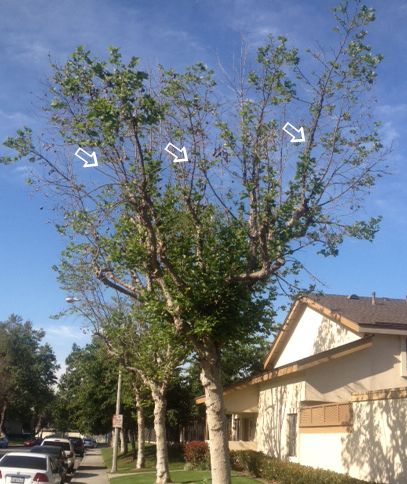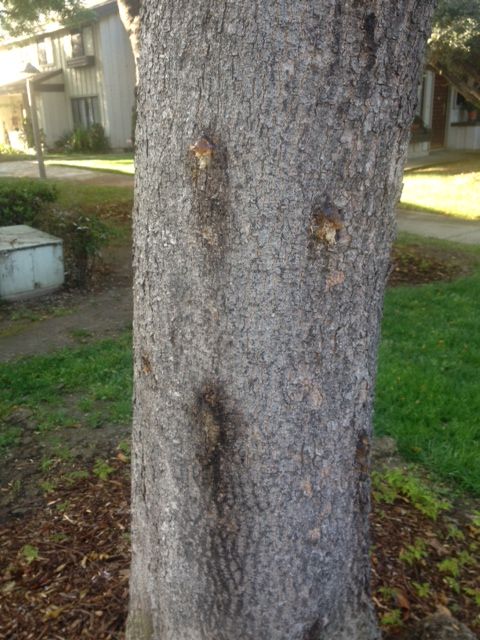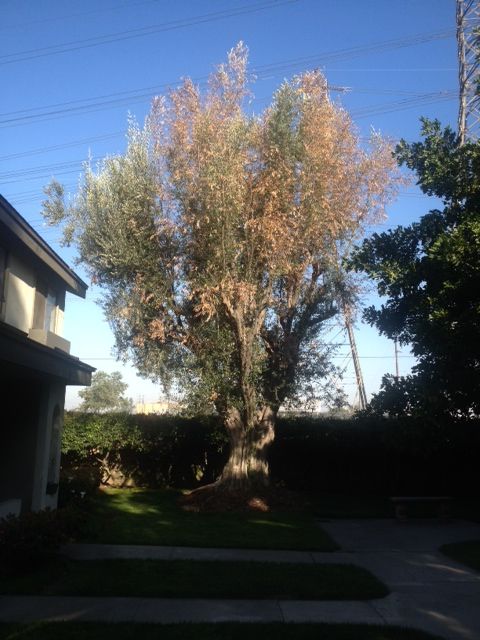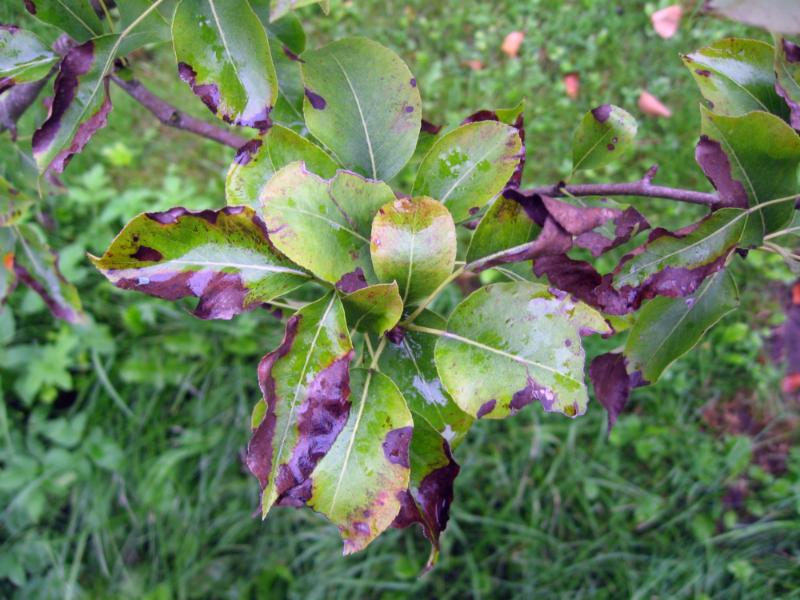 Your plants and trees are under attack this summer! But have no fear: The Stay Green team is here, and we’re playing very aggressive defense to protect your landscape from pests, blights and diseases, large and small.
Your plants and trees are under attack this summer! But have no fear: The Stay Green team is here, and we’re playing very aggressive defense to protect your landscape from pests, blights and diseases, large and small.
Here are a few of the pests and afflictions we’re seeing in the region as summer gets underway, along with a summary of the treatments Stay Green employs to prevent your trees and plants from being afflicted:
Anthracnose Disease on Sycamore Trees
- The Pest: This is a group of stem-inhabiting fungi that can affect all kinds of trees, shrubs, plants and even turf, but it is severely damaging sycamores this time of year. It can cause defoliation, leaf spots and a general ragged appearance. Healthy trees are better able to withstand anthracnose, but it can kill trees that are already stressed.
- The Defense: A great deal of the treatment for anthracnose is preventive. Proper sanitation practices can eliminate sources of the fungi in the winter, and in the fall any diseased leaves are collected and destroyed. Stay Green prunes out diseased twigs and branches to the greatest degree possible to inhibit disease development. Systemic fungicides are applied during the early fall and spring.
 Bark Beetles on Pines and Oaks
Bark Beetles on Pines and Oaks
- The Pest: Bark beetles primarily attack coniferous and hardwood trees, and in the Southland, we are seeing them infect pines and oaks most frequently. There are 6,000 different species of bark beetles, and many of them “specialize” in attaching a particular kind of tree. A bark beetle infestation is often characterized by entry holes, where the beetles have bored into the tree. Sometimes, the tree’s defense mechanisms will expel sap from these holes. The beetles cause physical damage to the tree and can also carry diseases.
- The Defense: Chemical control is the primary defense against bark beetles. The most effective method is usually direct injection or deep root injection of insecticide.
 Xylella Disease on Olives, Plums, and Liquid Ambers
Xylella Disease on Olives, Plums, and Liquid Ambers
- The Pest: Watch out for the glassy-winged sharpshooter! These bugs carry the xylem bacterium, which causes Pierce’s Disease. In our region, Pierce’s Disease is hitting olives, plums and liquid ambers, clogging the water-carrying arteries of the plants and restricting the flow of water. The symptoms, which include “dieback” as the tips and extremities of a plant are affected first, can mimic other diseases, so sometimes testing is necessary to diagnose Pierce’s disease.
- The Defense: Prevention is crucial because xylella fastidious infections can’t be cured. So, preventive systemic insecticides are applied to prevent the sharpshooter from infecting the tree with the disease. Also, trees that are in good health and manage to fend off the infection during the summer, when bacteria are most active, tend to dodge the bullet because the bacteria can’t survive cold winters.
 Fire Blight Disease on Pears
Fire Blight Disease on Pears
- The Pest: Fire blight, caused by the erwinia amylovora bacteria, affects vegetation in all nations except Australia and South Africa. While it can affect many species, in Southern California it is impacting pears the most. Primary infections are established in open blossoms and tender new shoots and leaves in the spring when blossoms are open. Honeybees and other insects, birds, rain and wind can transmit the bacterium to susceptible tissue. The affected leaves appear to be ‘scorched’ by flames, leaving the foliage blackened, cracked, and shrunken. The pathogen spreads through the tree via the plant’s vascular system. Once the plant’s roots are affected, death of the plant often results.
- The Defense: Antibiotic sprays and systemic injections can suppress fire blight. The rest of the plant can be saved if the affected branches are pruned before the infection spreads to the roots.
General Prevention: Deep Root Injections
Stay Green effectively delivers nutrients and chemicals to a plant’s root system via “deep root injection,” which helps deliver the treatment to the proper location and avoid runoff. A long “needle” is inserted into the dirt, breaking through the upper hard layers, and the pressurized solution from a spray rig can make its way into the soil. Multiple injection sites with varying depths ensure even spreading of the treatment.
Stay Green:
Defending Your Plants and Trees from Attack!

